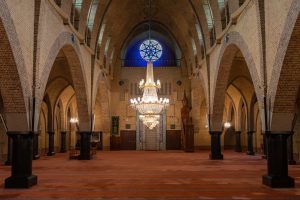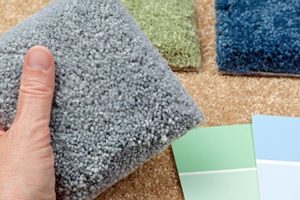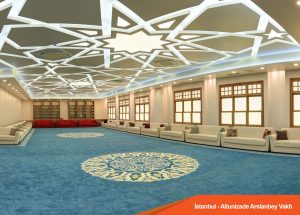https://tavusmosquecarpet.com/wp-content/cache/breeze-minification/js/breeze_faca10fc1b76408dc7ff2176b38961ef8ec7a8ebc1853b7558a5c21615b740653cf74e1b507b62a9a48ef341396b2a955f652654b93ec6730d796397200e6b19.js
https://tavusmosquecarpet.com/wp-content/cache/breeze-minification/js/breeze_0ceddcf694b52f08d233cf3a29e08952b04c28b5aa22f80973836ac2f66e02de7478d1491e7e077aba20161f26ab99f91d88fc2b6c0b9a9a07e48a915b71547e.js
https://tavusmosquecarpet.com/wp-content/cache/breeze-minification/js/breeze_dc5718606cf5c11ddb98aacaa6944bd08421714d34a297cfb1648be202ecb889e80501eb1f9899bd219e82d065177de6e81af6e5515a87904b1d917cb7f933f5.js
https://tavusmosquecarpet.com/wp-content/cache/breeze-minification/js/breeze_bf582072543b6b3297ab58a049ceacfa9897cc263735e9ae36ca9bbb8e7e66b1621e3eff31e7d8c45b93bf978c187844f9da7e12a346173f39827219d2bb59a1.js
https://tavusmosquecarpet.com/wp-content/cache/breeze-minification/js/breeze_b23e10f88afa827c0f0b776ac6953418ef1c60fa88ffdbeb451b2eed8c49a6ff3f685a30ce6976766bc70a102f74338c62fa54eda6959e4fa578249d60e82e73.js
https://tavusmosquecarpet.com/wp-content/cache/breeze-minification/js/breeze_cb0c87267d7faffc2e43992bc9b270bd868e605c87b3267e777f261ad09afd317b07ddf4cbf0b4a5e7837d9095d8fd753663c1f1b962b48851ad72e6da3bfefc.js
https://tavusmosquecarpet.com/wp-content/cache/breeze-minification/js/breeze_591fd99a9868c842e9684249c217245ba08d040b8300d27ec093074189944c06bddefac71beb0c4f5d5d3b6e5bd70c80c0b742d5437f7b8921853ad20e95ca6a.js
https://tavusmosquecarpet.com/wp-content/cache/breeze-minification/js/breeze_d49472b69e4e9c03756548c040c8b4091adb871a4db1171ce6a1dae523c20bc01864ee3e7714b0861ee3ee9b323969ddf09ee86e6507812918a93c869ab47a4b.js
https://tavusmosquecarpet.com/wp-content/cache/breeze-minification/js/breeze_211ad0c23f66c1140de87247261a40f82b2b58c6f367cdf724e9408a97a7672bb873042ed99541e7765a44a92c9603b047c444f18d889b9f43efdcdae4490e66.js
https://tavusmosquecarpet.com/wp-content/cache/breeze-minification/js/breeze_cd650b3c7a5a6e281fa7fcd1e058910b961e37a6e9249369a4a60ded9cdc825a93ee6b6605b580810b1676da64395e309f4687b0547e6517fe9144ab5f291966.js
https://tavusmosquecarpet.com/wp-content/cache/breeze-minification/js/breeze_9e25a760b6c9f3ccee91857d8426b16df19a1ccb60a10952d1f358af25c462ced0714ff7cb8ab2b81ce6c5b7babe30c1d1ab2ba98cc9b7654f9a9a1eb71346ec.js
https://tavusmosquecarpet.com/wp-content/cache/breeze-minification/js/breeze_b1dd538529e4b1bac759fd19d21a72d56e185c4efeaf1b92eecd34cfa61a9e27cdef9c431c46a26eaf9686db74097cf3084e72a5876625c0390578ba3c430391.js
https://tavusmosquecarpet.com/wp-content/cache/breeze-minification/js/breeze_0c8c18869e019ae94aa672bca72dd6002960252b614b45fb466a62e1bbdc9f7c4dad5beba4ec04373bca8e4c802dc67415af4d71304046b2b935cd9ba58416a3.js
https://tavusmosquecarpet.com/wp-content/cache/breeze-minification/js/breeze_d09ea58fac2b298689a6342ec608c5dddc36369950490bb58c6f3283a4c89576ac4691d5bc894abc54e1dea3e280d71c24834c66fb42d1f111d933587c9227d4.js
https://tavusmosquecarpet.com/wp-content/cache/breeze-minification/js/breeze_d82da839a4c42dd04af60c5fea906fd797e1b9f09d94c8d7526c6c927b7e8ad0af1eac3232f6a8f91c3c01aa760baacfef1052dcde14d429c5651ad311e38adc.js
https://tavusmosquecarpet.com/wp-content/cache/breeze-minification/js/breeze_9926dfecbb92473f7d54eafc4b79c40491e663e1a99e71acae539ecc8ed213d727357206d6996033f4910bc6ff16f335831e4d8d77589e69b58c756809bbab5e.js
https://tavusmosquecarpet.com/wp-content/cache/breeze-minification/js/breeze_644996922bf071e74487701b3beb1bee92da3d0f59b3a90ccbae2f2132dc88d51072bc7725e149ca65bccf150e612871cfe746e7c95a71d9b4ae0aa86c49cf93.js
https://tavusmosquecarpet.com/wp-content/cache/breeze-minification/js/breeze_fd9c6843b94a3297ac1bab3d5c5eeee494dcc14eb91354bb46665ba297181fc9dd6608baa21973cdfbd945efe82f1b5d3347d5f609532e6228c10647bdb35527.js
https://tavusmosquecarpet.com/wp-content/cache/breeze-minification/js/breeze_d364f785affb1d2849b2f040e3503f9fb3622489c2c465f116f6dff38587ec23400f8e5dc3887cc77bd918d68d5a5024a2560b9f73b54f6173c288e6e349bab9.js
https://tavusmosquecarpet.com/wp-content/cache/breeze-minification/js/breeze_cec5e9c76729bc7b440d29e9aafebb2af39840c6606716401cb5f561a652063d802d48e485e1beef13389b6f02386ca3ec3cab7aac70a8acb0a46af02b53b0ba.js
https://tavusmosquecarpet.com/wp-content/cache/breeze-minification/js/breeze_8e95bc4b54f86893370e51f0d2f916aed8ab29bc6f7cc4e5293284682ee977c6cbbceaf246ea0562251f69e2f10e012970a71c633015c847788c1ac22885b98d.js
https://tavusmosquecarpet.com/wp-content/cache/breeze-minification/js/breeze_a5f7e43f818793d39ed8ddc4c663204ecc267def66a06d01dc949583d64325ea9f59f853e3e23a416915a14c5b37fd6ddf1cb3deaf2cf5a369e399b9d1fea265.js
https://tavusmosquecarpet.com/wp-content/cache/breeze-minification/js/breeze_a0e65792af94b77c019b68381ee075223656e6d4d24f2feacb119dd7743622b2004463472f33369a7c9ed0e75f45444b6ea65a4013f6020a4e583af884662d07.js
https://tavusmosquecarpet.com/wp-content/cache/breeze-minification/js/breeze_ce49b21541472396955a1ef7d72f532ea258b71e43dfb747bd2567a578ed5c072c7376475fbf7f789bccad29f12c5eb7ba285cb00f59911342eda5f393a4c0c6.js
https://tavusmosquecarpet.com/wp-content/cache/breeze-minification/js/breeze_f18e92f06a25d18221136bc30c4582b205bd956c7ce9b2a1f4cdf4ee06ef0382fc83a148bf4612f4d8c108e9c3bbc91eb9a9699dc290989709f832cc612c5821.js
https://tavusmosquecarpet.com/wp-content/cache/breeze-minification/js/breeze_f0af2feacab49a6ba782de91a3ac9587c41646fceb8f2ef62c581690310b8ea927d5dbb215470a575fc7f54fe6ddea2ac1c10b8a8fdd9810339aeca5abb9d442.js
https://tavusmosquecarpet.com/wp-content/cache/breeze-minification/js/breeze_fd0644899d70482052b7eb3454d4f2909b35f3bf152f8b1f8c060156faf1de29522cb412fc2ed5812d5a2cef4ea016ec83bcd22dfda71bcaf83c1b3f25a863a0.js
https://tavusmosquecarpet.com/wp-content/cache/breeze-minification/js/breeze_99fa8affe796489ba3fd35a230b1ab65b91acbe27ab076d6e651267639e83515e5315e92f8f35e7c38cde5ad8c9735ff7da4e2323749fac925475120c3121644.js
https://tavusmosquecarpet.com/wp-content/cache/breeze-minification/js/breeze_d29a47458283a7d2a1fd19cdcdbc206c86e57f43d075b63d8587925b94ddd46a38ff9b70f688e5149e41dd83eeed17d641837244041b9a1fcf3fb28322cb663d.js
https://tavusmosquecarpet.com/wp-content/cache/breeze-minification/js/breeze_d773fb72e285c1cb5d106c51f96cf355d49d1d81033398b2b1f4744a48346b8787683e3f259bc8c52f4f6b198fa83c8b4842d31bd46d4b843becbcc0f907c40e.js
https://tavusmosquecarpet.com/wp-content/cache/breeze-minification/js/breeze_7055f897b66b309aea372a1849ba86a2cf6ba76889b83ca6e42bbe167e6e3f92dbb25532676ca5824e7b1b37c8c57ff0e077bb36b0b3453e4e395a4f7a57cc78.js
https://tavusmosquecarpet.com/wp-content/cache/breeze-minification/js/breeze_bdeea93749a5de91d0df7fdc9c41b61d2f96a8b334a2c53a731342614d3f3e11283b121fd614ef44aa315f3dbf3db291ef43e5b49fa5caa66cee58e4db6b0631.js
https://tavusmosquecarpet.com/wp-content/cache/breeze-minification/js/breeze_b474ea63b714321e235a0ef4475d61e8203041985f3d65c61cfeeca8273050cd7badb2f8045ed423639eedaa0eab20be92328abd5a1920463e2b36563c08f995.js
https://tavusmosquecarpet.com/wp-content/cache/breeze-minification/js/breeze_5b5e20920b959dfb8a1736a8f087d7033a901e863c10a9f380c8d559b4ef56780eaeef5a62d444e02318b5b882b1cfb4655bf5cc70479f9bd8de10620eb849ca.js
https://tavusmosquecarpet.com/wp-content/cache/breeze-minification/js/breeze_98d0905c766b5c1a7bd49d07cef080d66e60a4f954974bbf40608d484f7375b2b11cb602b5765462ed3c1f049d79bd612069b82346ced206eca497887f6e61f6.js
https://tavusmosquecarpet.com/wp-content/cache/breeze-minification/js/breeze_1d04d855d425d953b8994d7e2968c03e56a7deacf0bde760f5da14d35d4b8bff0a2ee999f6e4c184865ac0756def90c53ed10752aa16a55a32639f8cc7df2cbe.js
https://tavusmosquecarpet.com/wp-content/cache/breeze-minification/js/breeze_639d6da11a5b91fd8726d94338d0ad75b3dd1e74ac2f36e5398d9fc14908f1b5c1c3e6f2e3db87847fc3619ba9a74f93e8fe542c7499ec771b4eabba819b1cb5.js
https://tavusmosquecarpet.com/wp-content/cache/breeze-minification/js/breeze_35103818ee6dc2e5e96166c7a2a4289c8ee2bcec764e6f2dfeea22aa076f102c90cc78a151b6c268a106120fa535d751e797dbcef18e7adcaab7b7e43a56e4ef.js
https://tavusmosquecarpet.com/wp-content/cache/breeze-minification/js/breeze_17eeeaa3ed6dce9ac428e3f7fd4374329697716b7e6cb1219295497dc923a017e9915a81596f00b4668464ebc5e4baac4aca3c9a5104e87607997bffe78ba73b.js
https://tavusmosquecarpet.com/wp-content/cache/breeze-minification/js/breeze_6b8e15bd0a8bbc7f612cf3e33e5d7f37ff19769adc128ba1f9600b155fc0ddbeac01f94812545b1a16575f1b2c07e4a0b040912d602545b39ce7058f990ea4d0.js
https://tavusmosquecarpet.com/wp-content/cache/breeze-minification/js/breeze_e3794a81a69c92ed40c5bee27e99f13f0c872635e9d5a6daf422e87c22a119f1512ce326b2ec01772ff0b45ff575c82c15f171aeb89af683b9102d7c04ed7059.js
https://tavusmosquecarpet.com/wp-content/cache/breeze-minification/js/breeze_f97ee1537bdc805bf04af1889b0ee78570b21a19110e2037b26a78cfbdb23dc86ecd38fa8b51fca70242df25ffca4f0be708059d4aed6e71e4128aeb091bd6e5.js
https://tavusmosquecarpet.com/wp-content/cache/breeze-minification/js/breeze_9be6a796934c671768f9af810dc0637bffed495b016c2edec782fe5eb9324d205a7c60f3025b4208b56963b413937371d41a026766b04a87bf0b1db623b8ed64.js
https://tavusmosquecarpet.com/wp-content/cache/breeze-minification/js/breeze_acbb18f843247796cb1e5da3cf70f09ce9d10015c9d882af4a076965baa5389ad2cb46cfa935151a1a4194be43adffad52e3cfec28d0177fcc9279f8405f15e9.js
https://tavusmosquecarpet.com/wp-content/cache/breeze-minification/js/breeze_bc56bee8ec6c557af1e7e1a6926ccdcbdcfe4192779bf91488a22aab6d7619f914cf95ce5683cf7776a4e5ac1fbcec59131a21036b4c8fd0c8a248ba6a712cfc.js
https://tavusmosquecarpet.com/wp-content/cache/breeze-minification/js/breeze_a29a96a9303b852db003df0e70f99a98d183ba8bda95983fd57ee16a2c8c92c97929fcb55fccceed74849acf3d5e3ca939ce52ac278f020fcc0573323aae7815.js
https://tavusmosquecarpet.com/wp-content/cache/breeze-minification/js/breeze_a5d3c28ef0eed4089aef45fb0dfb9028dde207b2e619c5b9ec7dd153aded8d8ce2031ff260dfb28464849ac532c6cd78bd6beded1b31dd33a512edcfe24c6395.js
https://tavusmosquecarpet.com/wp-content/cache/breeze-minification/js/breeze_2743718f279a1834811a22da746fce30b600b979b6d548326713c2dac764009ddf0b06fd1d0e7d5cf9da6ccf41db83241791621931a94b6466475b7a7ea3a6d4.js
https://tavusmosquecarpet.com/wp-content/cache/breeze-minification/js/breeze_02bf11a92b523f2b25fc0efa4a8633fd9e297699eed18272cb9c84124ece27168aa8c7732d36db4cbca9df7e4fb9608d9f51f7b1d6c01963adaef39cf96dd53a.js
https://tavusmosquecarpet.com/wp-content/cache/breeze-minification/js/breeze_daa0b8e540bcbcd85dea03da033d0e5c3afd7212aa5aa6c7b7494b11dee857eabb2649f8b637812fae53a8959573c55ebffb84a9f2f32f0a81929fd41dfcfde4.js
https://tavusmosquecarpet.com/wp-content/cache/breeze-minification/js/breeze_0e6666a2cddd06712c334a20d19096c09855a1a41d16d324a0095952099c2b872bf311036c45e992eaede54adf15aca2edcdb6bd567a16d2aba9033deeada1d7.js
https://tavusmosquecarpet.com/wp-content/cache/breeze-minification/js/breeze_d17253b64d697f769e6c00b76d2291678a1bb9d5946fe9dc6fc9fe1ca7913b35b97436843d76549a142a92d4e6652894059bf7a75da2111388da0c05d3c28685.js
https://tavusmosquecarpet.com/wp-content/cache/breeze-minification/js/breeze_adc337e56d6a8ef9ff77307d6e9b187369c8644b28cc89b1ae9669daca31a1e9f4c929cd6261c5208ec64d28970409b84de27ce9a3b1fd93639b57516a5799fa.js
https://tavusmosquecarpet.com/wp-content/cache/breeze-minification/js/breeze_39dee72b435aabe2fd8f99fcee0d8d12ca3088fcf6850d7f1cc86f7916a3c86f1b4cb94bca65cc18d5781335c87d7f2bf9b7eea2d4cd3347a6bacb74f130585f.js
https://tavusmosquecarpet.com/wp-content/cache/breeze-minification/js/breeze_8bf03340b22db2c7258ce847504404f75e8f4ca92f8f9bb754080b0907355ce7a78ed74f0bbc20cf3d3b2e9d3d75173d488486fbd4c0dc1c413a110b563f2501.js
https://tavusmosquecarpet.com/wp-content/cache/breeze-minification/js/breeze_cf07353dde2810321d3bbab8bdfb2c3085b0cfc216267da52bdd6c448c9d949cf7ea400aed5b29f926d8e7e4ea8375355e34605ebadb8e41a1b20f0e5a8109cc.js
https://tavusmosquecarpet.com/wp-content/cache/breeze-minification/js/breeze_445965b952e522480d992cbac1de0330707deb2c888b4326de0eadec70e8ae7d8d38a81fdf5c1dec73c6dc9ec94a07c8508a6af3c206ae7c2f8d7a93f6de9ffa.js
https://tavusmosquecarpet.com/wp-content/cache/breeze-minification/js/breeze_7f4aefcede202aef4f18daabb45f73a76213ac65e8b0863620147835b5358f18067b3dcc6da3e21695c0ff2e9b243f3ffd41dd182f2680b21cb3762544366a1e.js
https://tavusmosquecarpet.com/wp-content/cache/breeze-minification/js/breeze_e9fdae644ccce0c68145c891ef1507028628b5c00c07a5f30571504158f111c252f16627d405eb3ed4b30062c01936309f443145d0fc8e6be52446829edb08bd.js







